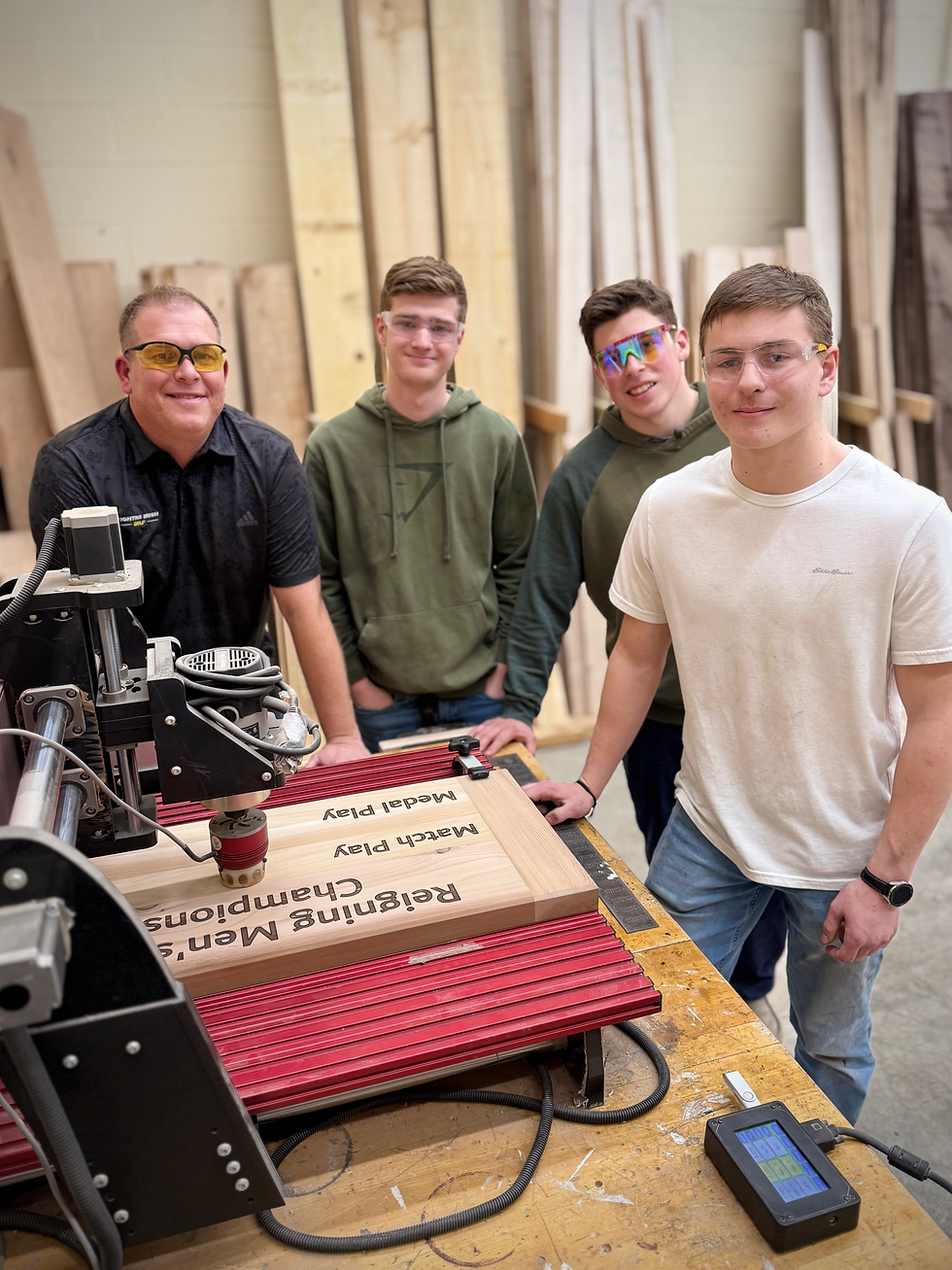Spring | 2025
Measure Twice, Build for Life: Lessons From the Wood Shop
"It’s not just about learning how to build—it’s about learning how to think, solve problems, and work together."

For Bryan Erickson, teaching industrial technology at Seneca High School isn’t just about teaching students how to work with wood, metal, or machinery—it’s about preparing them for life. A Seneca graduate himself—class of 1992—he once sat in the same classroom, learning from his own Woods teacher, Mr. Kluzek. Now, he’s leading a new generation of students, expanding the program, and giving them the skills to turn hands-on learning into future careers.
Among those students are Connor Pabian, Grant McCloskey, and Emmett Liberg, seniors who have spent years in the shop, mastering techniques that go beyond the basics of measuring, cutting, and assembling. Their time here has shaped not only their skills, but also their mindset about what it means to create something with their own hands.
“I learned how to work hard here,” says Grant. “This class showed me how to solve problems and take pride in what I do.” He’s considering a future in the trades, looking at paths like electrician work or diesel mechanics.
For Connor, the appeal is simple: if you know how to build something yourself, you don’t always have to buy it. “People just order things online, but when you can make it yourself, it means more,” he says. He’s already created an end table, a workbench, and several cutting boards—each a testament to his growing skills.
Emmett agrees. “I like seeing the look on people’s faces when I give them something I made,” he says. “It’s not just about building—it’s about making something that has meaning.”
Their work extends beyond personal projects. Under Erickson’s leadership, Seneca High School has expanded its industrial technology program to include electronics, manufacturing, robotics, and drafting. The Entrepreneurial Woods class has become one of the most exciting opportunities, allowing students to create, design, and sell custom products. Right now, the group is focused on plaques for sports teams and school awards, using a mix of hand tools, CNC routers, and laser engraving machines to create professional-grade pieces.
“We start with raw materials, prep everything ourselves, then engrave and finish each piece,” says Emmett. “We mostly use walnut, cherry, and red oak, but we’ll mix in other woods depending on the project.” It’s not just about craftsmanship—it’s about handling orders, managing materials, and turning their skills into real-world experience.
At Seneca High School, students learn early that success isn’t just about talent—it’s about effort. That belief is woven into The Seneca Way, a phrase that has come up time and again in their four years here. Each of them has a slightly different take on what it means, but a common theme runs through all of their answers.
“It’s about doing your best in whatever you choose,” says Grant. “Whether it’s woodworking, welding, or something else, you put in the effort.”
Connor sees it as a robust opportunity. “Seneca offers so many different classes—woodshop, auto, ag, physics—you can find your thing.”
For Emmett, it’s about work ethic and pride. “There are so many different directions you can take here, but the expectation is always the same: you work hard, and you take pride in what you do.”
As they look ahead, all three seniors have solid post-graduation plans. Connor is applying for a pipe-fitting apprenticeship with Local 597.
Grant plans to attend IVCC, taking a mix of welding, electrical, and automotive courses before committing to a trade. Emmett will enter the Local 150 Operators Union, focusing on water systems and earning his CDL to operate heavy equipment.
For Erickson, watching students take what they’ve learned and apply it to the real world is the most rewarding part of the job. Not everyone will become a carpenter or welder, but the skills they build here—problem-solving, teamwork, resilience—will stay with them.
“They may not all go into a trade, but they’re learning how to think through problems and work with their hands,” he says. “That’s something they’ll use no matter where they go.”
And whether they stay in Seneca or move on to new places, the lessons learned in this shop will always stick—long after the last project is sanded and finished.
